While most people enjoy a good crime novel, just what constitutes
a winning tale is often the subject of profound disagreement.
Here are a few pointers on the differences between some major types
of crime fiction that should help you discover writers you will enjoy.
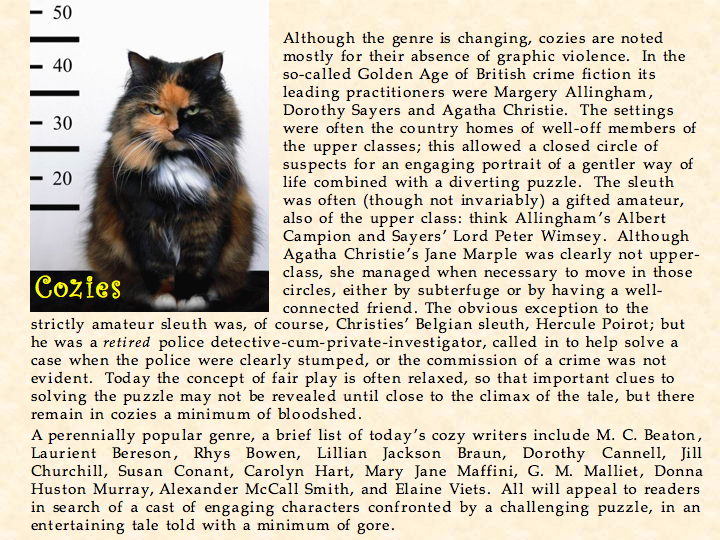
Humourous Mysteries
Combining mayhem and mirth can particularly challenging, but over the years many skilled writers have regaled their readers with well-crafted tales that combine laughs and larceny, humour and homicide. Sometimes the laughs are achieved by eccentric characterization, sometimes it's down to antic plotting, reminiscent of the screwball comedies of depression-era films; and in the best of this under-explored genre, it's by both.
Among writers who have mastered this difficult art form are Anthony Bidulka (with an over-the-top gay protagonist), Chris Grabenstein (an odd-couple pairing of uniformed cops, one a by-the-book ex-Marine, the other a laid-back newbie), Christopher Fowler (Septuagenarian sleuths), Donald Westlake (antic plotting with engaging losers), Giles Blunt (an eccentric misfit and his nephew decide to rob rich Republicans, but one of them is losing his marbles), Howard Engel (a Jewish PI who is the very antithesis of the hard-boiled gumshoe), Joe R. Lansdale (an odd-couple mix of a gay, black Vietnam vet and a lecherous smart-mouth, both based in Texas), Linwood Barclay (a bumbling, doomed-to-failure family man who gets his family inextricably bound up in his misdeeds), Mary Jane Maffini (a personal organizer whose own life is in perpetual disarray), M. C. Beaton (both her Agatha Raisin and Hamish Macbeth series), Rhys Bowen (who explores the gentle humour of Welsh village life), Robert Barnard (a skilled commentator on the human comedy), and Simon Brett (blessed with the mordant wit of a social satirist). All are guaranteed to bring a smile to your face.
Traditional Mysteries
In recent years some writers who dislike explicit violence, yet are attracted to comforting settings and puzzle tales, have moved away from the Cozy genre to write more realistic, slightly edgier stories. Some have an element of the thriller in them, though it is a tamed version, and the reader is not apt to suffer recurrent nightmares. Others lean toward police-procedural tales, chronicling an investigation but not bound up in a wealth of forensic or legalistic detail. This is a genre that will appeal to readers who are put off by (or perhaps have exhausted) the works of cozy writers, but who are attracted to stories where the puzzle still lies at the heart of the tale, and there is no gratuitous or unduly graphic violence or gore.
Among the writers who fall into this category are Ann Granger, Barbara Fradkin, Caroline Graham, Gail Bowen, Margaret Maron, Gillian Roberts, Louise Penny, Nancy Pickard, Julia Spencer-Fleming, Marcia Talley, and Simon Brett.
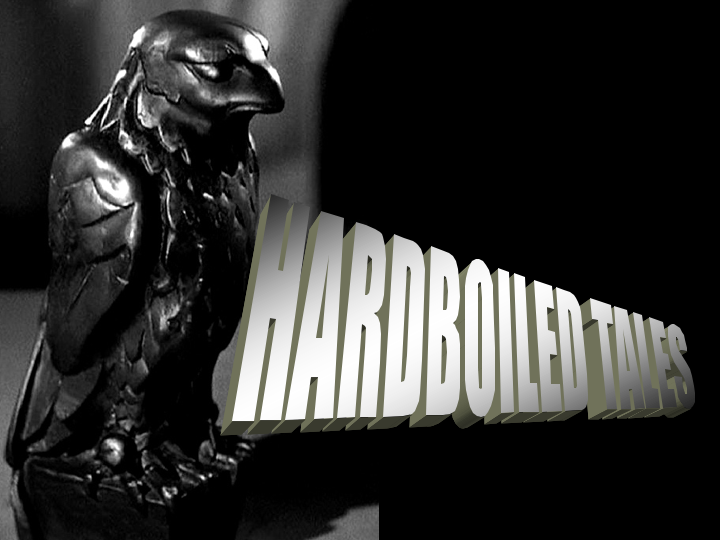
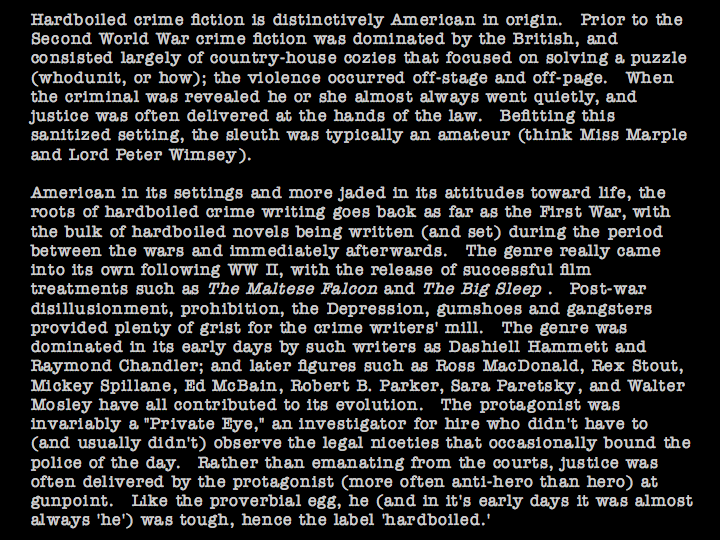


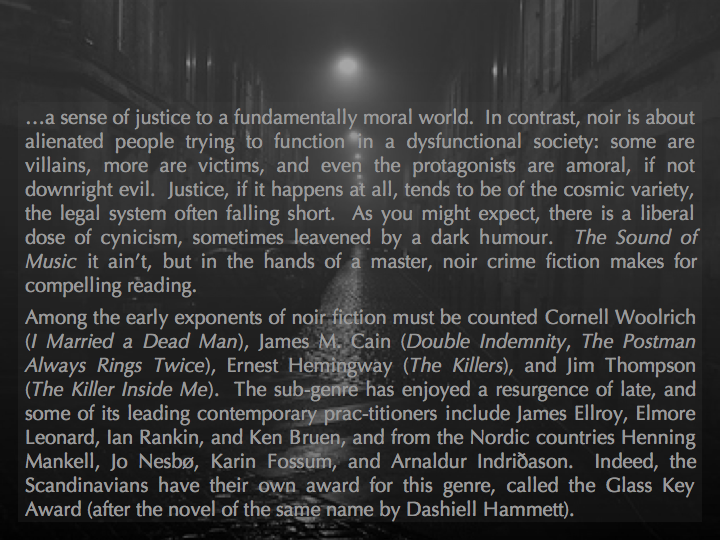
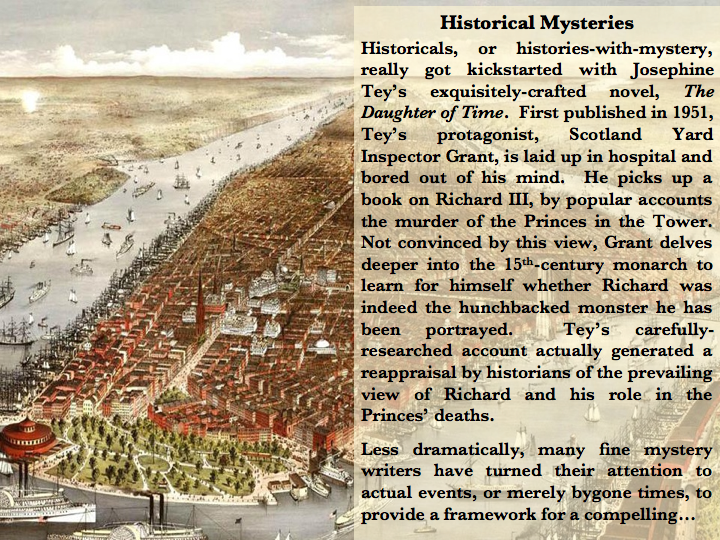
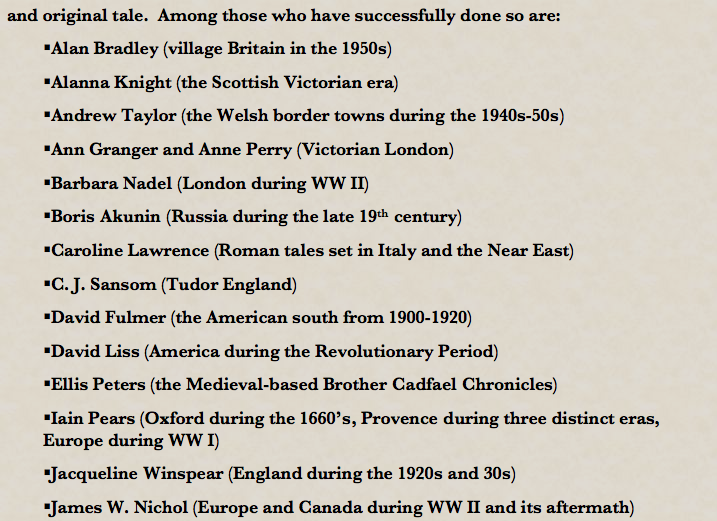
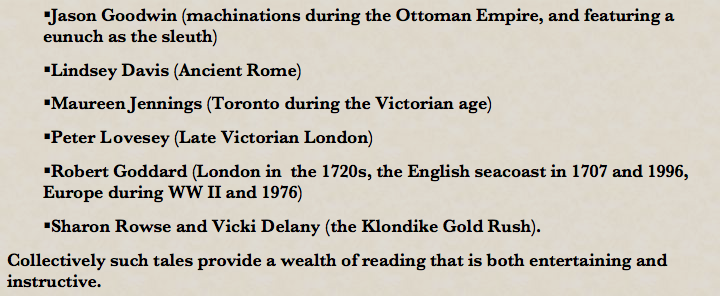

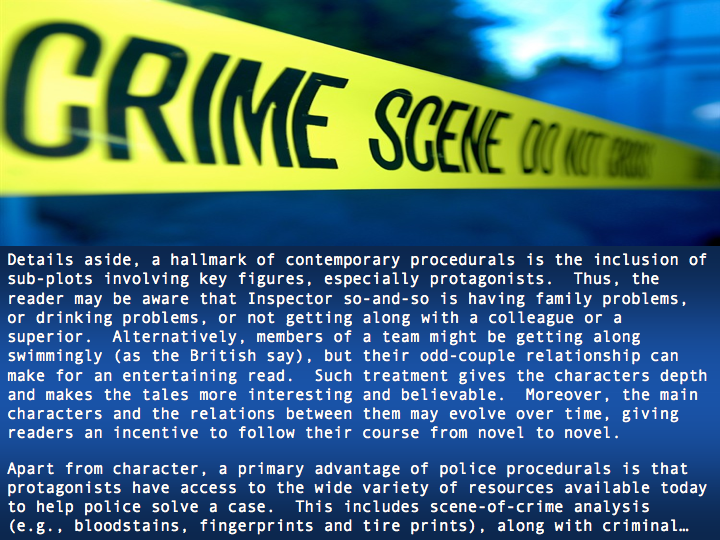
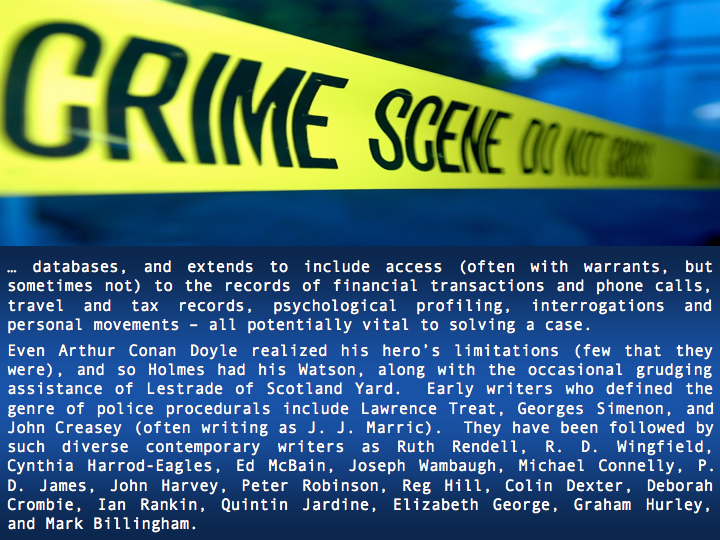
Forensic Mysteries
A sub-genre of police procedurals, the name speaks for itself. These tales are rooted in the physical evidence relating to a crime, be it fingerprints or bloodstains, DNA evidence, dental records (forensic odontology), the activity of insects on a body (forensic entomology), financial transactions and com- puter activities (forensic accounting and computer searches), etc. Most such stories dealing with human remains necessarily include graphic passages, though some authors (e.g., Aaron Elkins, Ellis Peters) keep such material to a minimum.
A list of contemporary crime writers specializing in forensics-based tales or forensic protagonists would be quite long, as currently there is a lot of interest in such stories; but even a brief list would include Aaron Elkins, Colin Cotterill, Ellis Peters, Kathy Reichs, Maureen Jennings, and Patricia Cornwell.

Thrillers
Excluding such esoterica as horror, fantasy, the supernatural, science fiction vampire and zombie tales (none of which are the purview of this site), the thriller genre is still broad enough to include caper tales, action thrillers, police and courtroom dramas, not to mention medical, political, military, spy, and psychological thrillers. The common denominators of works in this genre are fast-paced action, often (but not always), a point of view that includes the perpetrator's perspective, and generally some (often a lot of) graphic violence. Suspense and cliffhangers are central to thrillers; the protagonist might be the victim of some sort of conspiracy, and frequently seems over-matched compared to his or her adversaries. The characterization of protagonists can run from ordinary Joe (vacuum cleaner salesman James Wormold, in Graham Green's Our Man in Havana ) to superhero (Ian Fleming's James Bond ), to antihero (Alex Leamas in John le Carré's The Spy Who Came in From the Cold ).
Even the briefest sampling of classic thriller writers would encompass such diverse talents as Daphne du Maurier, Edgar Allan Poe, Frederick Forsyth, Graham Greene, Ian Fleming, Jack Higgins, John le Carré, and Ruth Rendell (writing as Barbara Vine). In a commentary on our troubled times, thriller writers dominate the field of crime fiction today, and a shortlist of the most accomplished contemporary thriller writers would have include Arnald Indriðason, Giles Blunt, Lynwood Barclay, Barry Eisler, Chelsea Cain, Dan Brown (but see my review), Dan Fesperman, Daniel Silva, David Baldacci, Dean Koontz, Denise Mina, Dennis Lehane, Elmore Leonard, George Pelecanos, Giles Blunt, Harlan Coben, Ian Rankin, James Ellroy, James Patterson, Jeff Lindsay, Karin Fossum, Ken Bruen, Michael Dobbs, Minette Walters, Mo Hayter, Peter James, Rick Mofina, Tom Clancy Scott Turow, and Stella Rimington.

Crossovers
Finally, many of today's authors are testing the limits of conventional genres by writing crossover novels, tales that are not simply puzzle mysteries, procedurals, historicals or thrillers, but combine elements of two (or even more) of these categories. Thus, Louise Penny's bestselling Inspector Gamache novels, though traditional in the sense that violence is kept to a minimum, feature a police inspector (rather than an amateur sleuth) as the protagonist; and in between the profiles of lovable eccentrics and mouth-watering descriptions of food there is a measure of suspense as well, as she moves ever closer to the thriller genre. And as Linwood Barclay moves into the thriller genre he brings with him an everyman protagonist and domestic humour that are trademarks of his earlier works. Other writers exploring new forms of crime fiction include Boris Akunin, David Liss, Dean Koontz, David Peace, Jeff Lindsay, Stephen L. Carter, Iain Pears, and Philip Kerr.
